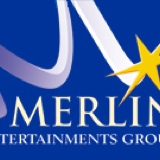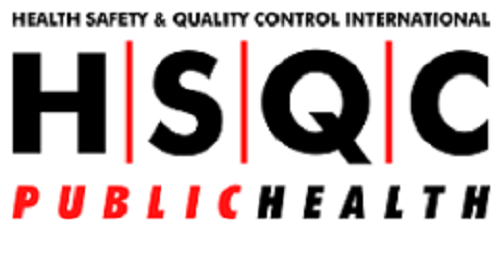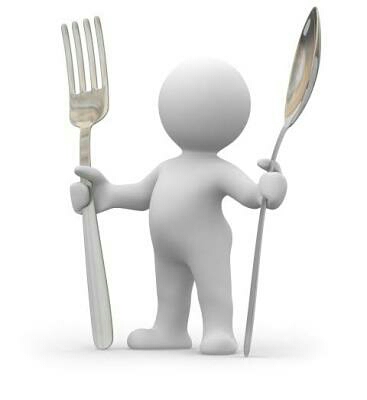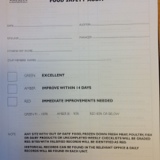Title Page
-
Hotel Name
-
Audited Areas
-
Conducted on
-
Name of Auditor
-
Department / Section
Sample tests
-
Food sample from menus served to 20 or more guests are stored in the freezer (-20℃ or below) for 14 days.
-
Number of people taking the hand swab for microbiological test
-
Name of people taking the hand swab for microbiological test
-
Number of food samples
Personal hygiene
-
Hand washing procedures are understood and followed.
-
Hand washing sink facilities are available.
-
At work, employees wear a designated uniform and hat.
-
Disposable gloves are used specifically for RTE (cooked food, food served raw)
-
First aid kits are kept well stocked.
-
Personal property is present during working hours. (Drinks for hydration can be placed in a special case).
-
Personal hygiene checklist has been properly fill out when arriving at work. Person in charge has confirmed it.
Receiving food
-
Acceptance inspection records are properly maintained and verified.
-
Quantity, packaging condition, and expiration date are confirmed upon receiving.
-
Refrigerated foods are kept at a temperature below 5°C. (Below 8℃ upon receiving)
-
Frozen foods are kept at -18℃ or below. (Below -12℃ upon receiving)
-
Records (evidence) are kept when returns and other irregularities occur.
-
Chilled/frozen foods and ingredients are transferred to the refrigerator/freezer within 30 minutes.
-
Transportation from purchasing to the kitchen is carried out in a hygienic manner.
Food storage
-
Method of First-in First-Out is followed.
-
Cold foods are kept for no longer than 48h in secondary shelf life.
-
Hot foods are kept for no longer than 72h in secondary shelf life.
-
Raw ingredients and cooked foods are not stored together.
-
Food is separated correctly according to hygiene standards.
-
There are no cardboard boxes in the refrigerator.
-
Refrigerators and freezers are cleaned and hygienic.
-
There is a display board for ingredients on each shelf of the freezer and refrigerator.
-
There are no baskets or food cases on the ground.
-
Refrigerators' temperature is below 5℃.
-
Freezers' temperature is below -18℃.
-
There are no open cans stored in the refrigerator.
-
There is adequate refrigeration and freezer conditions free of leaks, frost, and solidification that could cause cross-contamination.
-
All door rubber gaskets are in good condition.
-
Are the specified temperature standards clearly marked on each thermometer?
-
Storage temperature of dry food is below 20℃ (never exceeds 25℃).
-
Humidity is less than 65%
-
All boxes are covered, at the required distance from the floor, walls, and ceiling, and there are no damaged boxes.
-
Drug storage regulations are understood.
-
The temperature and humidity of the storage room are recorded, and there is also a confirmation sign.
-
Is the SDS file readily available when using or distributing detergents and cleaning chemicals?
The temperature of hot food is over 60℃
-
-A la carte
-
-Buffet / Banquet
-
-Transfer
-
-Keep hot foods
The temperature of cold food is below 5℃
-
-A la carte
-
-Buffet / Banquet
-
-Transfer
-
-Keep cold foods
-
Daily temperature records are being properly recorded and there are confirmation signs.
Labelling
-
All stored ingredients are labeled with the date (and time if necessary) and cooking process.
-
No expired food left.
-
Do not put food in non-food containers.
-
Homemade products are labeled with the contents, date of manufacture, and expiry date.
-
The original expiry date is also displayed on the label of the subdivided items.
Food preparation
-
Cutting boards are differentiated by color depending on their purpose.
-
Cutting boards are stored properly.
-
The slicer is properly cleaned and sterilized before use.
-
Can openers are properly cleaned and sterilized before use.
-
Ice machines are cleaned and disinfected weekly.
-
Ice scoops are stored hygienically.
-
Are you following the instructions for using the sponge?
-
Towel policy is followed. (Use color coding, limit usage areas, throw away items that come in contact with food, etc.)
Thawing
-
Thawing in the refrigerator: The date and time are indicated on the label.
-
Thawing in the refrigerator: not exposed (cover).
-
Thawing under running water: The date and time are indicated on the label. (within 90 minutes).
-
Not thawed at room temperature.
-
You are following the correct defrosting procedure. (Eat within 48 hours of thawing process)
Cooking
-
Minimum center temperature during cooking
-
Minimum heating temperature: Beef, pork, seafood, eggs 63℃, poultry 74℃, ground beef/pork 72℃, roast beef/lamb 54.4℃ x 112 minutes or more
-
The simplified HACCP plan and recipe form are consistent.
Allergies
-
All ingredients or dishes purchased as ready-made products are listed and recorded in the recipe form. We request product specifications as needed.
-
Food ingredient lists have been updated so that all staff can view allergen information.
-
Displays on menus, buffet boards, and cashiers encourage guests to ask staff questions about ingredients.
-
Understand what to do if a guest has an allergic reaction.
Service (buffet)
-
Temperature and time of food on display.
-
The food items on display are being replaced rather than added to.
Reheat, leftovers, cool
-
When reheating, it is done at a center temperature of 75℃ or higher.
-
Know the rules for reheating (e.g., temperature and preheating time when using a microwave).
-
Know the rules regarding leftovers.
-
Cooling of food is done correctly. After cooking, food must be cooled to below 21°C (69°F) within 2 hours and below 5°C (41°F) within 4 hours.
-
When cooling hot foods, leave a gap in the lid until the temperature drops to 5°C (41°F).
-
When food is being cooled, it is indicated on a special label.
-
There is a record of reheating.
-
There is a record of cooling and leftovers.
Cleaning
-
The cleaning solution temperature for main cleaning is 55℃-65℃.
-
The temperature of the final rinse is 82℃ or higher.
-
The finish of washed dishes is satisfactory.
-
Damaged tableware is disposed of separately from other tableware.
-
Temperature records and service reports are properly recorded and stored.
-
The trash can is in good condition (inside, trash bag, lid: no lid if not foot-operated)
-
Is the sink clean and sanitary before and after use?
-
Are germicidal lamps clean and working properly?
-
Cleaning the insect trap and operating it properly.
-
No unused equipment left in food processing areas.
-
A notice saying "out of order" is posted for equipment that is out of order.
-
The food processing area is organized and free of clutter.
-
Drainage facilities are functioning properly.
-
Equipment repairs are not carried out on the spot during food processing.
-
Machines and equipment are well maintained and in good working condition.
-
Maintenance and inspection records (cleaning records) are kept properly, and there are confirmation signs.
-
No pests, rats, etc. have settled in or spread.
-
Is the tank properly cleaned inside and out?
-
The water in the aquarium is clean and at an appropriate temperature.
-
Is the duct hood clean?
-
Is the oil in the fryer clean and replenished?
-
Is the air conditioner/air supply outlet clean?
-
There are no peelings on the floor, walls, or shelves in the kitchen.
-
There is no trash left on the floor in the kitchen.
-
Cleaning equipment condition.
-
There are no holes or cracks in the ceiling.
Room Service
-
All equipment used in guest rooms is disinfected.
-
Any food removed from the kitchen must be covered and at the correct temperature.
-
Beverages in glass or open containers are covered with lids.
-
Contaminated food is discarded before being delivered to guests and new dishes are delivered.
-
Used service trays are collected as soon as possible.
Thermometer calibration
-
The thermometer is calibrated every month and records are kept.
-
Measures the temperature of ice water (0℃) and boiling water (approximately 100℃), with a maximum allowable error of within ±1℃.
-
An infrared thermometer measures the temperature of hot coffee and iced coffee. The error with a calibrated thermometer is within ±2℃.
Pest control
-
We have concluded a contract with a specialist company for pest control.
-
Regular inspection reports are provided and shared with the HACCP committee.
-
If problems are identified, thorough and frequent inspections include specific countermeasures.
Other remarks
-
Other remarks














